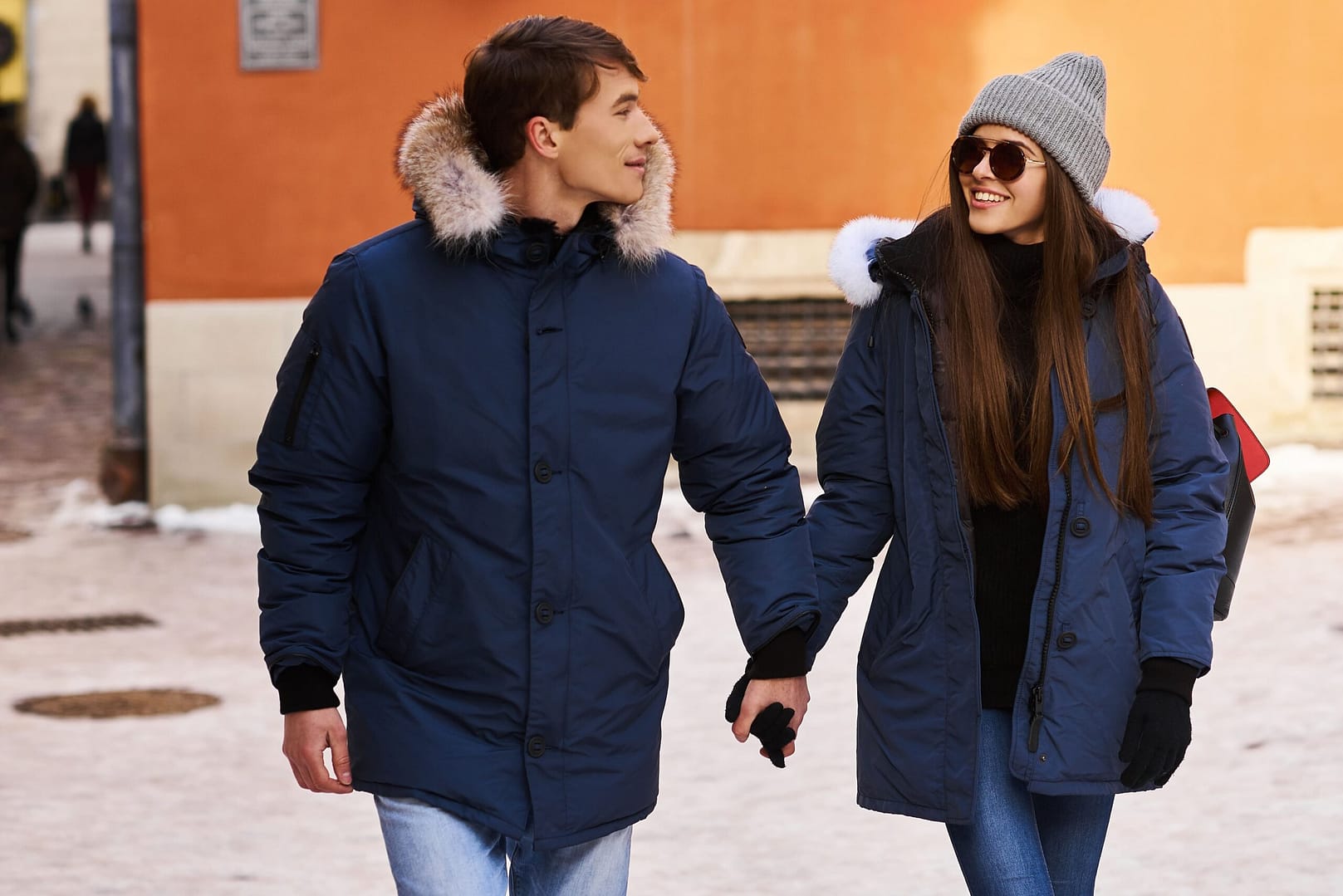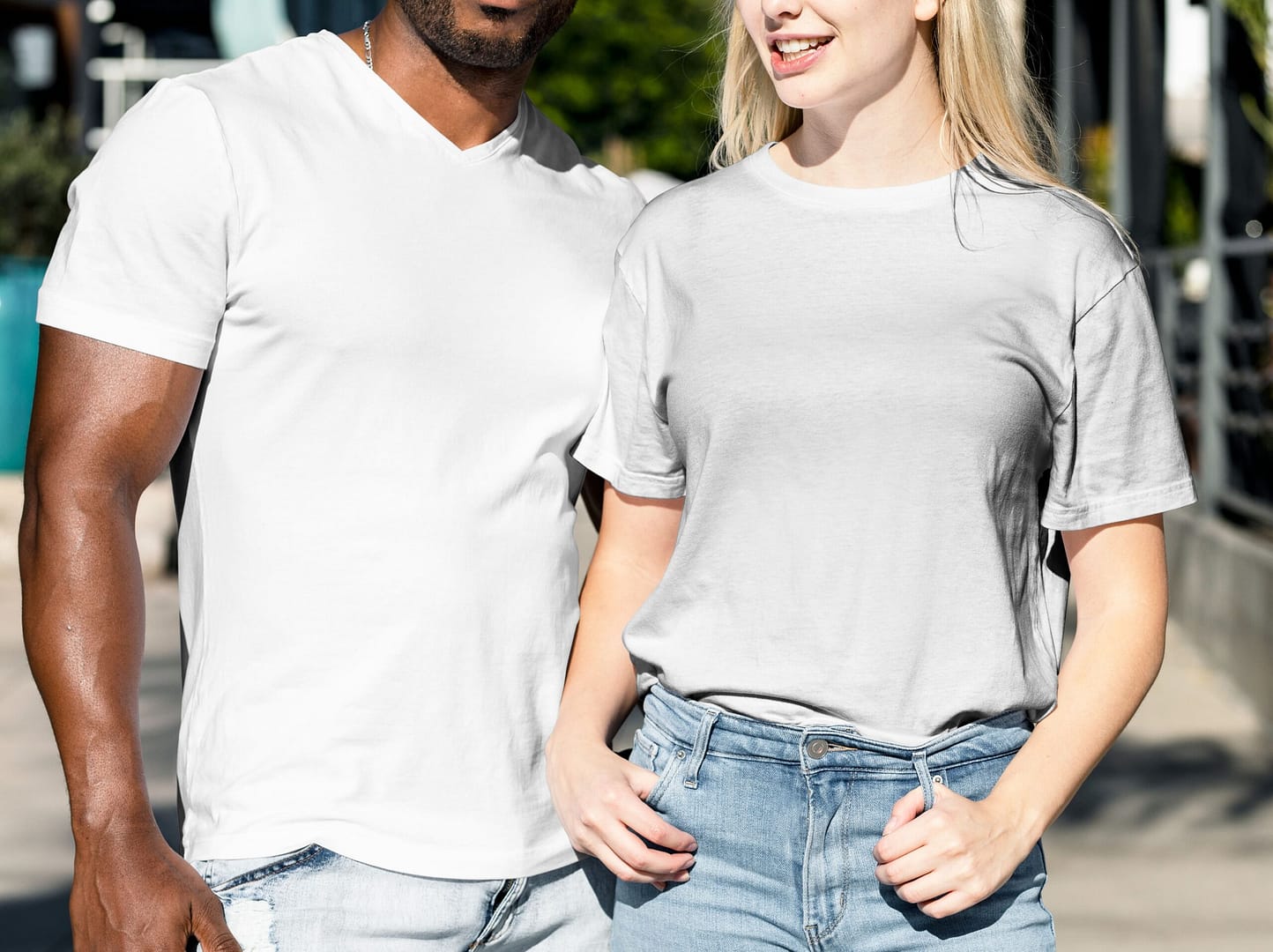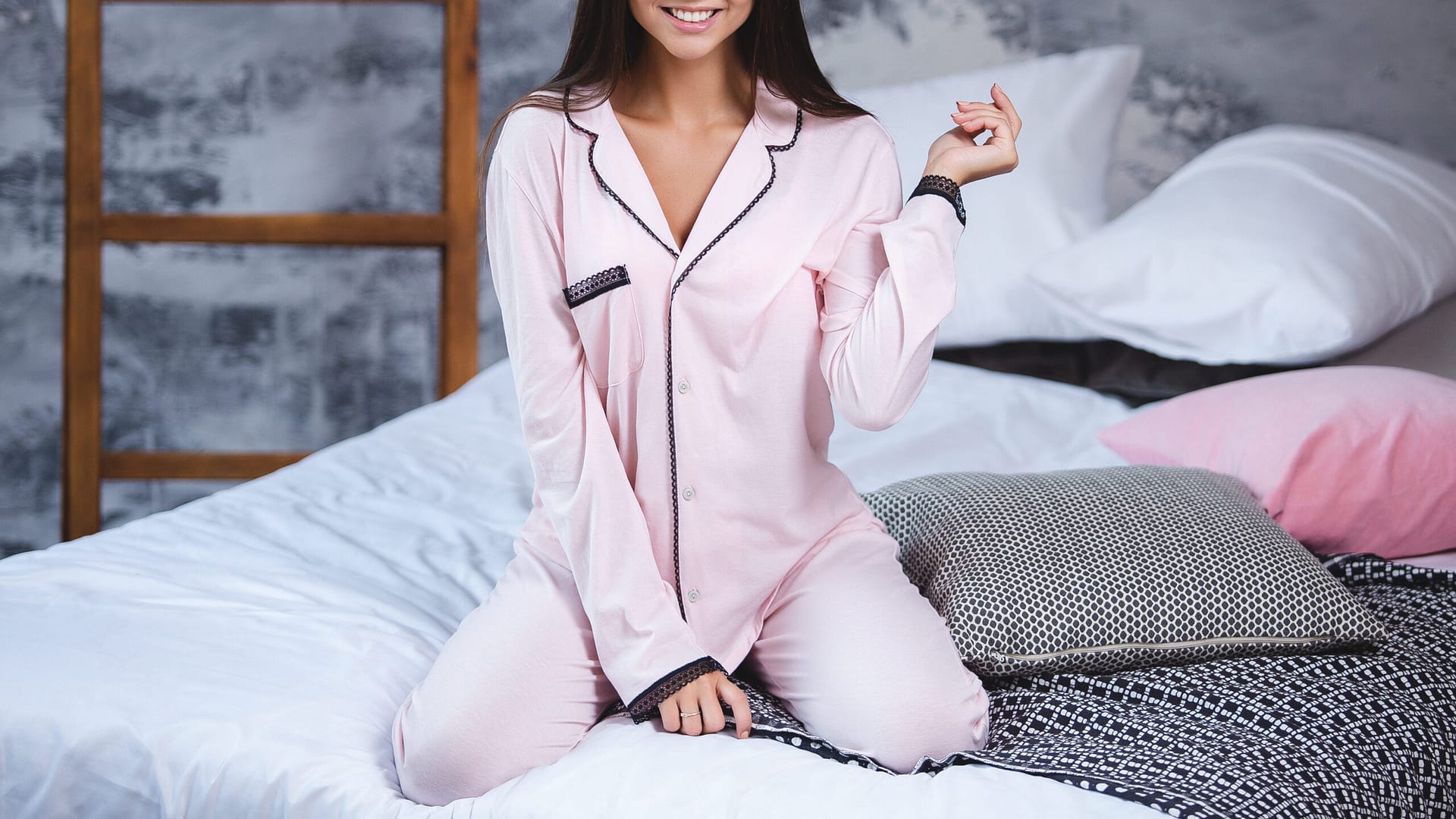The Ultimate Jacket Fabric Guide: Top 6 Fabrics For Your Jacket
By Raymond Lau – Nov. 22, 2023
The fabric of a jacket is much more than just its outer shell; it’s the essence of its design, dictating style, functionality, and comfort. As a designer, understanding the vast world of jacket fabrics is crucial in creating pieces that not only look good but also serve their intended purpose. This guide delves deep into the nuances of jacket fabrics, offering insights that are fundamental to the design process. From the tactile texture of cotton to the robust resilience of synthetics, each fabric tells a story. This story shapes the jacket’s identity, influencing how it’s perceived, worn, and cherished. As we explore the various fabrics available, designers will gain a clearer understanding of how to make fabric choices that resonate with their design ethos and meet the practical needs of the wearer.
The Basics of Jacket Fabrics
Understanding the fundamental properties of jacket fabrics is key to making informed design decisions. Fabrics vary in weight and texture, influencing both the appearance and the wearability of a jacket. Light-weight fabrics like thin cotton or polyester blends are ideal for casual spring or summer jackets, offering breathability and ease of movement. Medium-weight fabrics, such as standard wool or leather, strike a balance, making them suitable for a wide range of climates and occasions. Heavy-weight fabrics like thick wool or insulated synthetics are perfect for colder conditions, providing warmth and durability. The texture of the fabric also plays a crucial role. A smooth, fine weave gives a sleek and sophisticated look, suitable for formal wear, while a coarser, more textured fabric lends a rugged and casual feel, ideal for outdoor or informal jackets. Each fabric’s inherent properties, such as breathability, durability, water resistance, and stretch, further influence its suitability for different jacket styles and purposes. A designer’s proficiency in matching these properties with the jacket’s intended use is what sets apart great design from the merely good.
Types of Jacket Fabrics
Diving into the specific types of jacket fabrics, we find a rich array of materials, each with unique characteristics.
Cotton
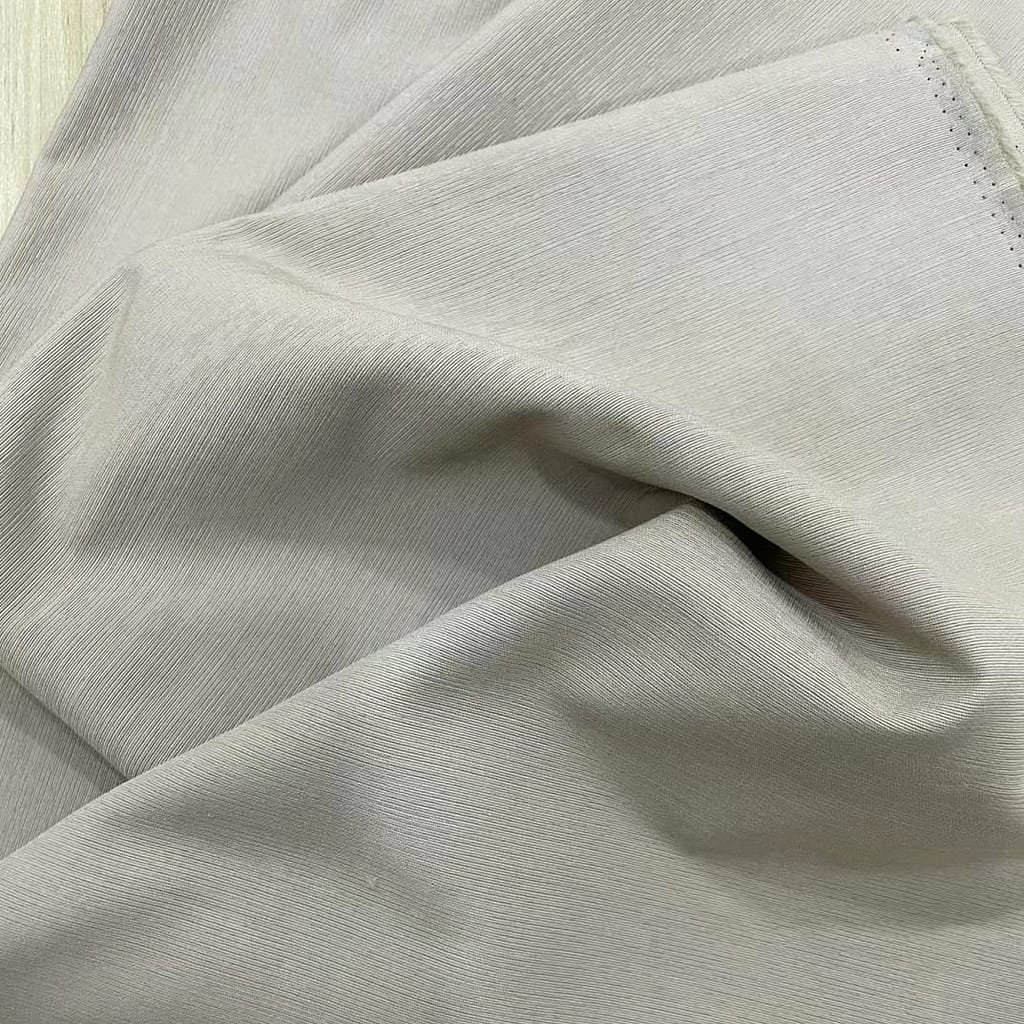
Cotton jacket fabrics are made from the fibers of the cotton plant. Cotton is a natural fiber that is known for its softness, breathability, and comfort. It is also a relatively affordable fabric, making it a popular choice for jackets.
Advantages of cotton jacket fabrics:
- Soft and comfortable: Cotton is a very soft and comfortable fabric that is gentle on the skin. This makes it a good choice for people with sensitive skin.
- Breathable: Cotton is a breathable fabric that allows air to circulate, which helps to keep you cool and comfortable in warm weather.
- Durable: Cotton is a durable fabric that can withstand a lot of wear and tear. This makes it a good choice for jackets that you will be wearing often.
- Easy to care for: Cotton is an easy-to-care-for fabric that can be machine washed and dried.
Disadvantages of cotton jacket fabrics:
- Can wrinkle easily: Cotton is a fabric that can wrinkle easily. This can be a disadvantage if you want a jacket that always looks neat and tidy.
- Can shrink: Cotton is a fabric that can shrink, especially if it is washed in hot water or dried in a high-heat dryer. This can be a disadvantage if you want a jacket that fits you well.
- Not as water-resistant as some other fabrics: Cotton is not as water-resistant as some other fabrics, such as nylon or polyester. This can be a disadvantage if you want a jacket that will keep you dry in the rain.
Cotton jacket fabrics are a good choice for people who are looking for a comfortable, breathable, and durable jacket. However, it is important to be aware of the disadvantages of cotton fabrics, such as their tendency to wrinkle and shrink.
Polyester
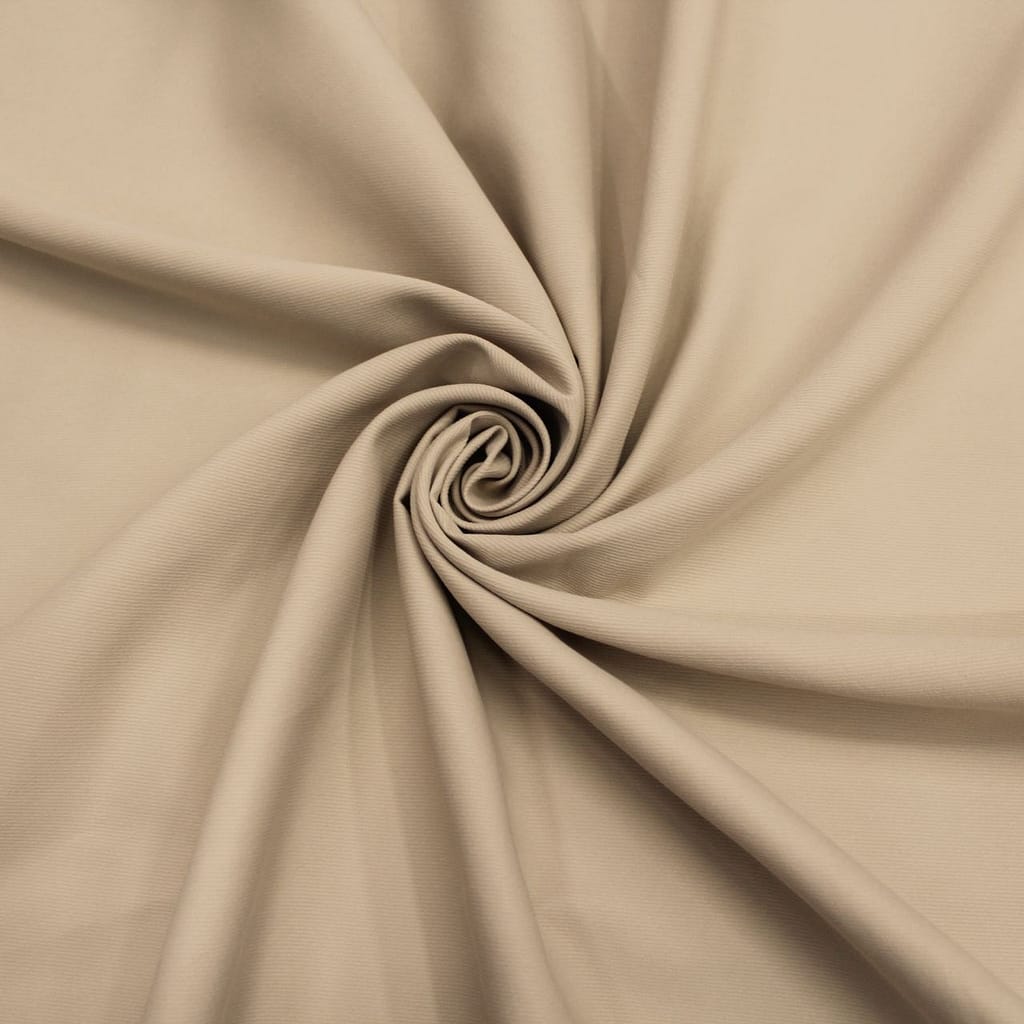
Polyester jacket fabrics are made from synthetic fibers that are derived from petroleum. Polyester is a popular choice for jackets because it is strong, durable, and wrinkle-resistant. It is also relatively inexpensive to produce.
Advantages of polyester jacket fabrics:
- Strong and durable: Polyester is a very strong and durable fabric that can withstand a lot of wear and tear. This makes it a good choice for jackets that you will be wearing often.
- Wrinkle-resistant: Polyester is a wrinkle-resistant fabric that will not wrinkle easily. This makes it a good choice for people who want a jacket that always looks neat and tidy.
- Water-resistant: Polyester is a water-resistant fabric that will not soak up water. This makes it a good choice for jackets that you will be wearing in the rain or snow.
- Quick-drying: Polyester is a quick-drying fabric that will dry quickly after it gets wet. This makes it a good choice for people who are active or who live in humid climates.
- Inexpensive: Polyester is a relatively inexpensive fabric to produce, which makes it a good choice for people who are on a budget.
Disadvantages of polyester jacket fabrics:
- Not as breathable as natural fibers: Polyester is not as breathable as natural fibers, such as cotton or wool. This can make it a less comfortable fabric to wear in warm weather.
- Can be flammable: Polyester is a flammable fabric that can catch fire easily. This is something to be aware of if you are planning to wear your polyester jacket in situations where there is a risk of fire.
Polyester jacket fabrics are a good choice for people who are looking for a strong, durable, and wrinkle-resistant jacket. However, it is important to be aware of the disadvantages of polyester fabrics, such as their tendency to be flammable and not as breathable as natural fibers.
Nylon
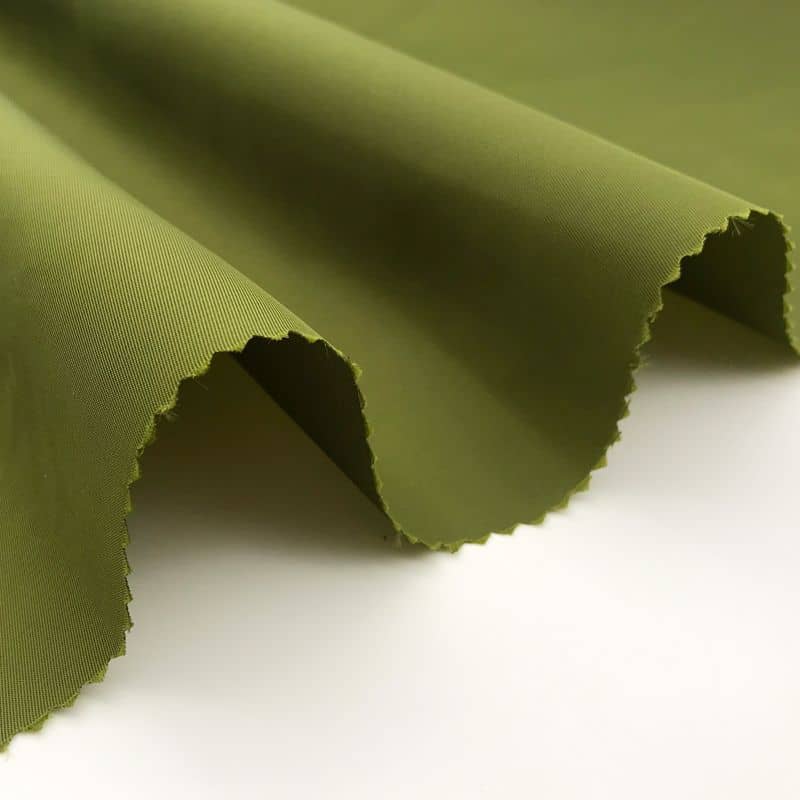
Nylon jacket fabrics are made from synthetic fibers that are derived from petroleum. Nylon is a popular choice for jackets because it is lightweight, strong, durable, and water-resistant.
Advantages of nylon jacket fabrics:
- Lightweight: Nylon is a very lightweight fabric that is comfortable to wear in warm weather.
- Strong and durable: Nylon is a very strong and durable fabric that can withstand a lot of wear and tear. This makes it a good choice for jackets that you will be wearing often.
- Water-resistant: Nylon is a water-resistant fabric that will not soak up water. This makes it a good choice for jackets that you will be wearing in the rain or snow.
- Quick-drying: Nylon is a quick-drying fabric that will dry quickly after it gets wet. This makes it a good choice for people who are active or who live in humid climates.
- Windproof: Nylon is a windproof fabric that will block out the wind. This makes it a good choice for jackets that you will be wearing in cold or windy weather.
Disadvantages of nylon jacket fabrics:
- Not as breathable as natural fibers: Nylon is not as breathable as natural fibers, such as cotton or wool. This can make it a less comfortable fabric to wear in warm weather.
- Can be flammable: Nylon is a flammable fabric that can catch fire easily. This is something to be aware of if you are planning to wear your nylon jacket in situations where there is a risk of fire.
- Can be noisy: Nylon can be a noisy fabric, especially when it is rubbed against other materials. This can be a disadvantage if you are looking for a quiet jacket.
- Not as environmentally friendly as natural fibers: Nylon is a synthetic fabric that is not as environmentally friendly as natural fibers. This is because it is made from petroleum, a non-renewable resource.
Nylon jacket fabrics are a good choice for people who are looking for a lightweight, strong, durable, and water-resistant jacket. However, it is important to be aware of the disadvantages of nylon fabrics, such as their tendency to be flammable and noisy, and not as breathable as natural fibers.
Leather
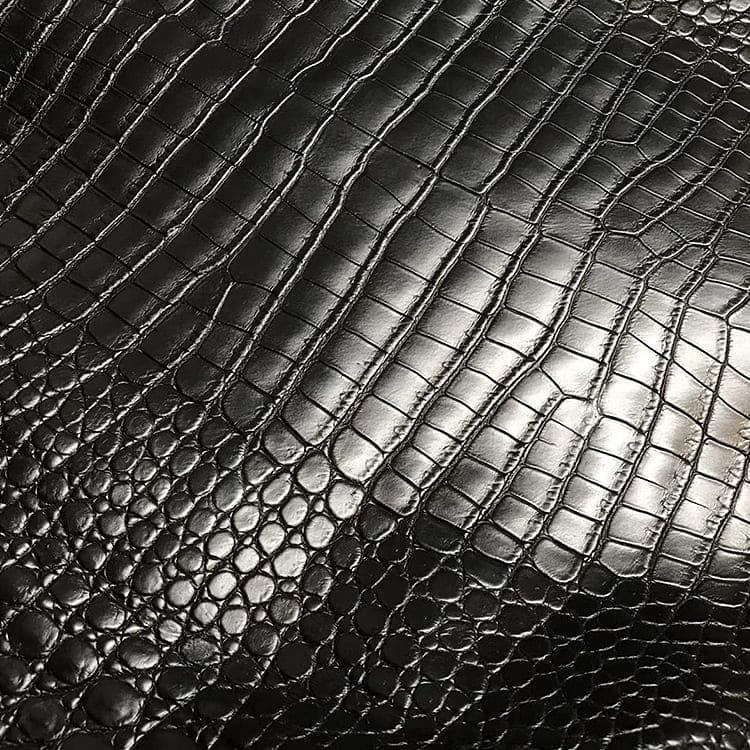
Leather jacket fabrics are made from the hides of animals, such as cows, pigs, and sheep. Leather is a natural material that is known for its durability, beauty, and versatility. It is also a relatively expensive material, which is why leather jackets are often considered a luxury item.
Advantages of leather jacket fabrics:
- Durability: Leather is a very durable fabric that can withstand a lot of wear and tear. This makes it a good choice for jackets that you will be wearing often.
- Beauty: Leather is a beautiful fabric that has a natural grain and texture. This gives leather jackets a unique look that is both stylish and sophisticated.
- Versatility: Leather jackets can be dressed up or down, making them a versatile wardrobe staple. They can be worn with jeans and a t-shirt for a casual look, or with a dress or skirt for a more formal look.
- Water-resistant: Leather is a water-resistant fabric that will not soak up water. This makes it a good choice for jackets that you will be wearing in the rain or snow.
Disadvantages of leather jacket fabrics:
- Expensive: Leather is a relatively expensive fabric, which is why leather jackets are often considered a luxury item.
- Requires care: Leather is a natural material that requires regular care to keep it looking its best. This includes cleaning, conditioning, and protecting it from the elements.
- Not as breathable as natural fibers: Leather is not as breathable as natural fibers, such as cotton or wool. This can make it a less comfortable fabric to wear in warm weather.
- Can be cold in cold weather: Leather is a good insulator, but it can also be cold in cold weather. This is because it does not trap warm air as well as some other fabrics, such as wool or down
Leather jacket fabrics are a good choice for people who are looking for a durable, stylish, and versatile jacket. However, it is important to be aware of the disadvantages of leather fabrics, such as their high cost and the need for regular care.
PU (Ploy Urethane)
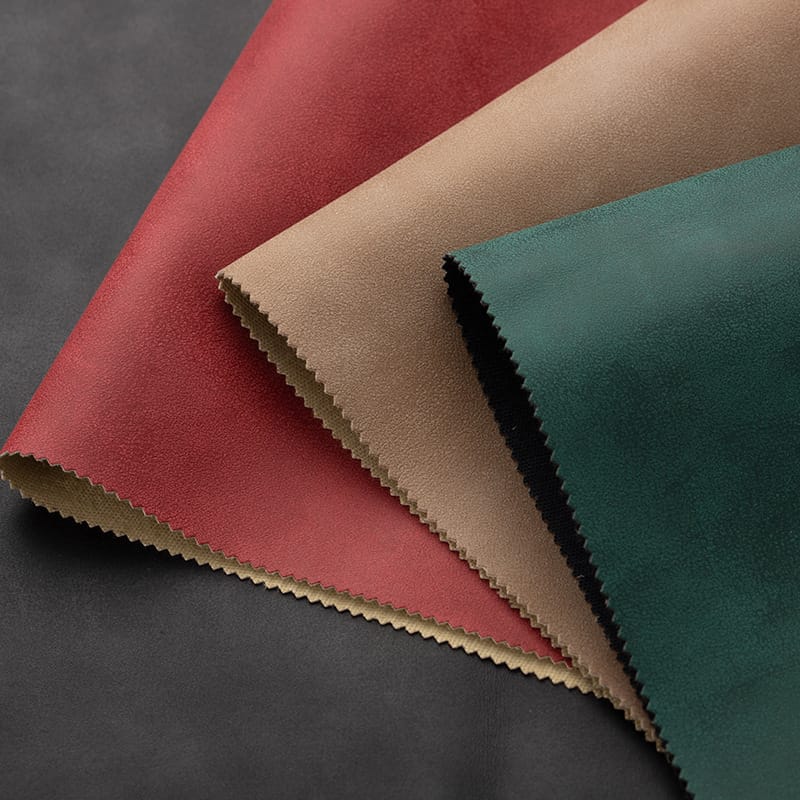
PU jacket fabrics are made from a synthetic polymer that is designed to look and feel like real leather. They are a popular choice for jackets because they are affordable, durable, and easy to care for.
Advantages of PU jacket fabrics:
- Affordable: PU leather is much less expensive than real leather, making it a more affordable option for many people.
- Durable: PU leather is a durable fabric that can withstand a lot of wear and tear. It is also water-resistant and scratch-resistant.
- Easy to care for: PU leather is easy to care for. It can be cleaned with a damp cloth and does not require regular conditioning.
- Variety of colors and styles: PU leather is available in a wide variety of colors and styles, making it a versatile option for jackets.
Disadvantages of PU jacket fabrics:
- Does not breathe as well as real leather: PU leather does not breathe as well as real leather, which can make it uncomfortable to wear in warm weather.
- Not as environmentally friendly as natural fibers: PU leather is made from petroleum, a non-renewable resource.
- Can be flammable: Some types of PU leather can be flammable, so it is important to be careful when wearing them near open flames.
- May crack or peel over time: PU leather may start to crack or peel over time, especially if it is not properly cared for.
PU jacket fabrics are a good choice for people who are looking for an affordable, durable, and easy-to-care-for alternative to real leather. However, it is important to be aware of the disadvantages of PU leather fabrics, such as their tendency to not breathe as well, not as environmentally friendly as natural fibers, can be flammable, and may crack or peel over time.
Wool
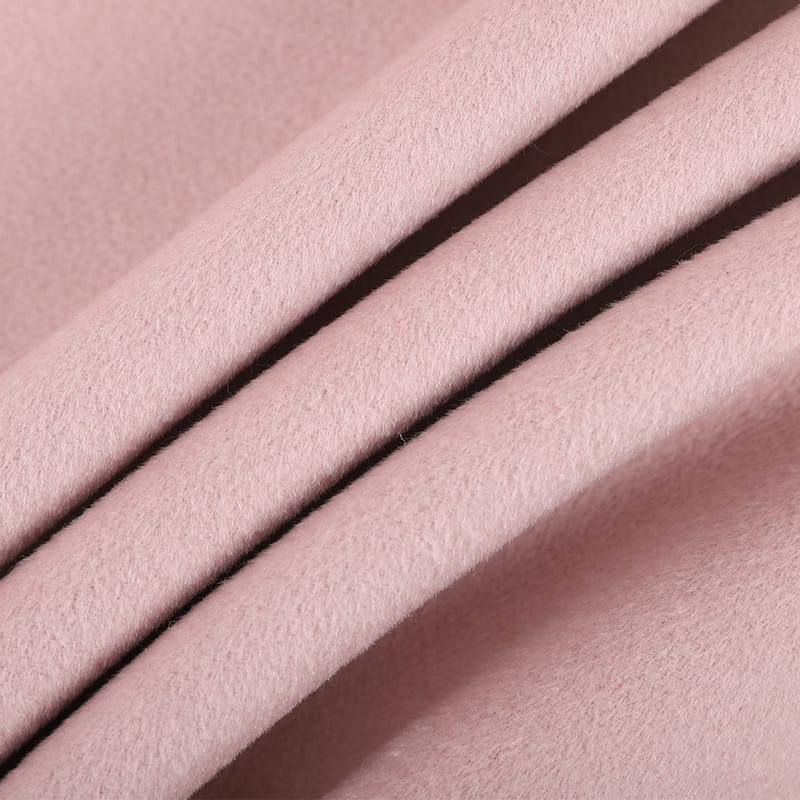
Wool jacket fabrics are made from the natural fibers of the wool-bearing sheep. Wool is a versatile fabric that is known for its warmth, durability, and breathability. It is also a natural and renewable resource, making it a more environmentally friendly option than some synthetic fabrics.
Advantages of wool jacket fabrics:
- Warmth: Wool is a naturally warm fabric that is perfect for winter jackets. It traps air between its fibers, which helps to keep you warm in cold weather.
- Breathable: Wool is a breathable fabric that allows air to circulate, which helps to keep you comfortable in warm weather. This also makes wool a good choice for people who have sensitive skin, as it is not as likely to irritate the skin as some other fabrics.
- Odor-resistant: Wool is naturally odor-resistant, which means that it will not hold onto smells as much as some other fabrics. This makes wool a good choice for jackets that you will be wearing for long periods of time, or for jackets that you will be wearing in sweaty conditions.
- Moisture-wicking: Wool is a moisture-wicking fabric, which means that it will draw moisture away from your skin and keep you dry. This is a good thing for people who are active or who live in humid climates.
- Renewable resource: Wool is a natural and renewable resource, which means that it is more environmentally friendly than some synthetic fabrics.
Disadvantages of wool jacket fabrics:
- Can be itchy: Wool can be itchy for some people, especially if it is not soft or fine. If you are sensitive to wool, you may want to choose a jacket made from a merino wool blend, which is softer and less itchy than regular wool.
- Can shrink: Wool can shrink if it is washed in hot water or dried in a high-heat dryer. This is something to be aware of if you are buying a wool jacket, and it is important to follow the care instructions carefully.
- Can be expensive: Wool is a relatively expensive fabric, which can make wool jackets more expensive than jackets made from other fabrics.
Wool jacket fabrics are a good choice for people who are looking for a warm, durable, and breathable jacket. However, it is important to be aware of the disadvantages of wool fabrics, such as their tendency to be itchy and shrink, and can be expensive.
Choosing the Right Fabric for Different Jacket Styles
The selection of the right fabric is pivotal in aligning a jacket’s design with its intended use and style.
- Casual Jackets: For these, comfort and ease are paramount. Fabrics like light cotton, denim, or soft polyester blends are ideal. They offer flexibility and a relaxed look, perfect for everyday wear. The choice of fabric here can range from rugged canvas for a more durable, outdoor look to softer, lighter materials for a laid-back, effortless style.
- Formal Jackets: When designing formal jackets, the choice of fabric shifts towards more luxurious and refined options. Wool blends, high-quality leather, and fine synthetic materials are commonly used. These fabrics provide a polished finish, essential for creating an elegant and sophisticated silhouette.
- Functional Jackets: For sports or outdoor jackets, technical fabrics come into play. Waterproof and wind-resistant materials like Gore-Tex, nylon, or specially treated polyester are often chosen for their ability to protect against the elements. These fabrics are engineered for high performance, ensuring that the jacket is not only practical but also comfortable in various weather conditions.
Understanding the different requirements of each jacket style and choosing fabrics accordingly is a testament to a designer’s skill and attention to detail. It’s about creating harmony between form and function, where the fabric not only complements the design but enhances it.
Sustainability in Fabric Choice
In today’s fashion world, sustainability is not just a trend, but a necessity. As designers, the choice of fabric also carries an environmental responsibility.
- Eco-Friendly Materials: Fabrics such as organic cotton, recycled polyester, and Tencel (made from sustainably sourced wood) are gaining popularity. These materials are produced with a lower environmental impact, reducing water usage, pesticide reliance, and carbon footprint. Incorporating these eco-friendly fabrics into jacket designs not only appeals to environmentally conscious consumers but also contributes to a more sustainable fashion industry.
- Ethical Sourcing: Beyond the material itself, the sourcing of fabrics plays a critical role in sustainability. It involves choosing suppliers who adhere to ethical practices in terms of labor, production processes, and material sourcing. This ensures that the entire production chain, from fiber to finished product, aligns with sustainability and ethical standards.
Incorporating sustainability into fabric choice is a step towards more responsible design. It challenges designers to innovate while considering the environmental impact of their creations, paving the way for a future where fashion and sustainability coexist harmoniously.
Fabric Care and Maintenance
An often overlooked but crucial aspect of fabric selection is the care and maintenance required to keep the jacket in its best condition.
- Caring for Different Fabrics: Each fabric type demands specific care practices. For instance, leather requires regular conditioning to prevent cracking, while wool may need to be dry cleaned to maintain its texture and shape. Cotton and synthetic blends are generally more forgiving, often suitable for machine washing and regular wear.
- Extending Fabric Life: Providing guidelines on proper fabric care is not only beneficial for the end consumer but also reflects a commitment to quality and sustainability. Tips such as washing in cold water, air drying, and proper storage can significantly extend the life of a jacket. Educating customers about these practices helps in reducing waste and promoting a culture of care and longevity in fashion.
- Innovations in Care: New advancements in fabric technology also extend to care and maintenance. For example, the development of stain-resistant or wrinkle-free fabrics reduces the need for frequent cleaning and ironing, making jackets more durable and easier to maintain.
Understanding and communicating the care needs of different fabrics is a vital part of the design process, ensuring that the jackets not only look good when they’re new but continue to do so over time.
Conclusion
As we conclude this comprehensive guide, it’s evident that the choice of fabric is not just about aesthetics but a crucial decision that shapes the very essence of a jacket. From the natural elegance of wool to the innovative resilience of synthetics, each fabric tells its own story, contributing to the jacket’s functionality, style, and longevity. In the world of design, where every thread counts, understanding and valuing the diversity of fabrics is fundamental.
Moreover, this journey through the world of jacket fabrics highlights the importance of sustainable and ethical practices in fashion design. It’s not only about creating trends but also about nurturing an environment-conscious approach that resonates with the values of today’s consumers. At Valtin Apparel, we embody this ethos, offering a range of apparel choices that align with these principles. Our commitment to quality, sustainable practices, and innovative designs is reflected in every piece we create.

